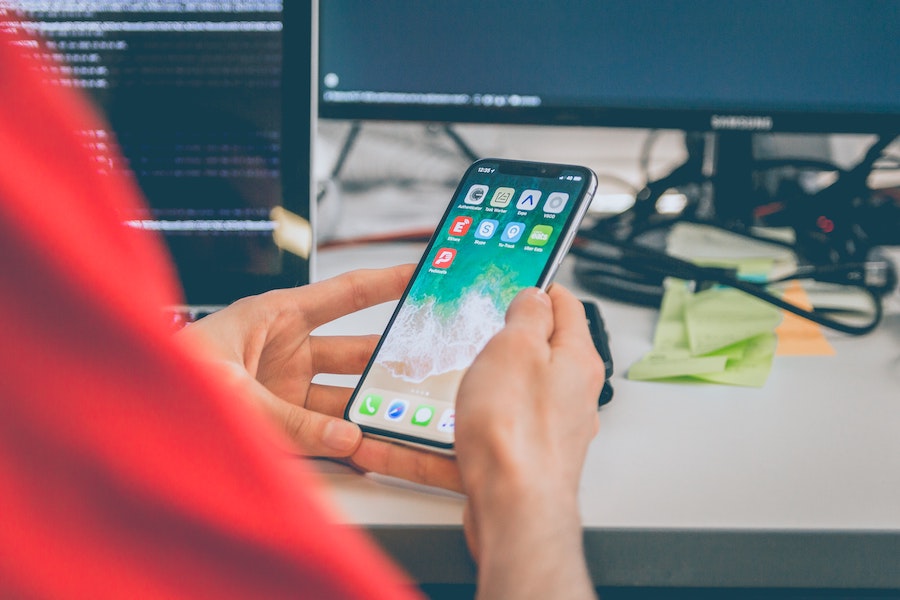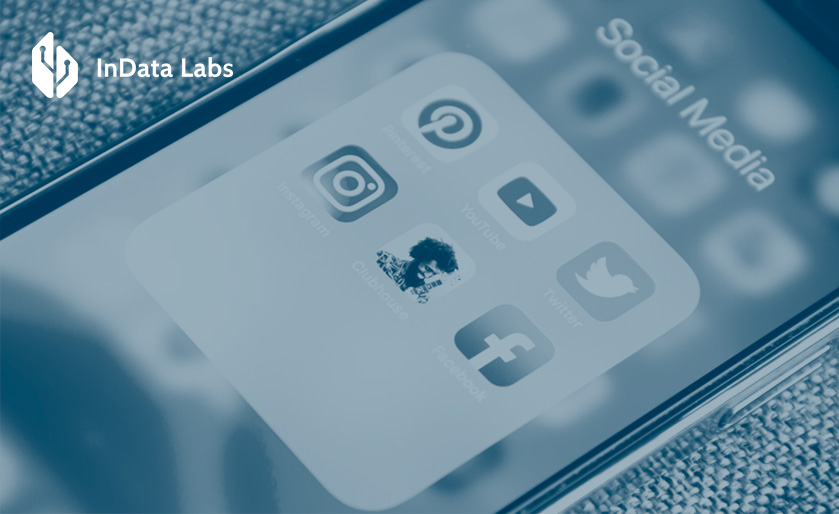In recent years, we experienced numerous breakthroughs when it comes to using artificial intelligence (AI) in various areas of business and people’s lives. One of the most fascinating and promising areas of this technology is generative artificial intelligence. This term refers to a type of AI that can create new, original content such as text, images, and music. Unlike other AI techniques that rely on existing data to make predictions or classifications, generative AI can prepare new data that was never seen before.
Generative AI has the potential to revolutionize various fields, including art, fashion, entertainment, healthcare, marketing, and so much more.

Source: Unsplash
Thanks to its help, artists, entrepreneurs, and scientists can gain support in creating unique, innovative solutions.
With recent ChatGPT’s popularity boom, we wanted to explore the subject a little bit more and answer all the burning questions. Since everyone’s attention is directed towards the possibilities of generative artificial intelligence, we believe that having some knowledge about it is crucial to understand its benefits, limitations, and potential impact on society.
What is generative AI?
As we mentioned, generative artificial intelligence takes inputs provided by the training party to produce its own, one-of-the-kind output. Besides making pictures, copy, or sounds, it can also write code, create animations, prepare research, and provide many other types of content. That’s why it can be used to help humans with many activities across a broad range of industries.
What are the generative AI examples?
The most prominent platforms that utilize generative AI algorithms are ChatGPT, DALL-E, Midjourney, and Microsoft’s search engine Bing. Their purposes differ, but they have one thing in common – generating responses tailor-made to the user’s request. For example, AI algorithms can be asked to paint in the style of famous artists or to create adequate music that matches the vocals of a singer.
Why is ChatGPT so popular at the moment?
ChatGPT was created to provide an AI-powered conversational experience available for all. It became the first generative artificial intelligence tool that is used on such an enormous scale. That’s thanks to its universal character because the platform can answer questions, engage in discussion, provide information, and even create text content.

The model utilizes machine learning and natural language processing and was trained on vast amounts of data which made ChatGPT more sophisticated and effective over time. As a result, its accuracy and reliability increased. That contributed to its popularity as a go-to resource for people seeking answers to their questions. The app can generate human-like responses with a variety of inputs. When its popularity started to spread, it became an everyday tool for numerous professionals, including entrepreneurs, social media creators, copywriters, marketers, programmers, and so much more.
How do generative AI algorithms compare to other AI techniques?
What distinguishes generative artificial intelligence from other types of AI is the skill of producing content that is supposed to be unique. While other models can also detect patterns, forecast tendencies, and find anomalies, their tasks are limited to doing just that. They can prepare reports, but they are not destined to create something new.
For example, conversational AI will answer the user’s questions, but it won’t prepare an article or an image that can be considered innovative. The response can be even a copy-paste from a website or a book. The algorithm is focused on providing information to learn from. Generative AI can also do that, but if it’s asked to provide a specific output, it will prepare something different from the datasets it learned from. Of course, these capabilities are limited, but content produced by such models offers a high level of originality and can be used for various purposes.
How does generative AI work?
The primary type of algorithm used by generative artificial intelligence is machine learning. That’s because ML is a subset of AI that learns progressively based on the data it’s fed with. This way, it starts to understand patterns, dependencies, and anomalies in vast amounts of inputs and can create something new that is still in accordance with the information it knows. Machine learning solutions are versatile and universal when it comes to most of the areas covered by AI.

Source: Unsplash
Another algorithm used by generative AI tools is deep learning, which is essentially a subcategory of machine learning. It uses artificial neural networks similar to the neural networks in the human brain to process data. One example of such a framework is the generative adversarial network (GAN) structure. It uses a generating network to create new outputs and a discriminating network to evaluate their value. The two networks collaborate to prepare original content from the provided data.
What does the process of content creation look like when using generative AI?
The algorithm goes through a few phases to produce final outputs. It’s a process that is common for the majority of AI-based models. Here’s what it looks like step-by-step:
Data collection
AI needs datasets that might be useful when creating content. They should be large, rich in detail, and provide all the necessary information to shape the algorithm’s abilities. Depending on the type of output we want to receive, the data should also come in various forms (images, texts, videos, audio, etc.).

Source: Unsplash
Model training
The algorithm analyzes the data to understand patterns and relationships between particular data points. The more data the AI is exposed to, the better it becomes at generating unique content.
Content generation
After the training period is over, it’s time to test the capabilities of generative artificial intelligence in producing unique content. For example, the user can send a request for AI to write an article or answer a question like a chatbot. Depending on the purpose of the model, they can generate texts, pictures, videos, and sounds or modify the existing ones.

Source: Unsplash
Review and feedback
Before the solution becomes publicly available, the experts behind it have to evaluate the quality of its work and if it’s not satisfying – adjust the model’s parameters. Refinements are necessary to help AI generate better outputs in the future. It’s important to remember that the process of content creation via generative artificial intelligence is iterative and requires constant improvements to get better at what it does.
Deployment
Once the AI model is trained and tested, it can be implemented to generate new content on a large scale by a bigger group of users. The outputs it produces can be used for a broad spectrum of purposes, including marketing, advertising, or even creative and commercial projects. Many models also continue their learning journey while being used by the target audience because they are constantly fed with new data inputs and differently written requests.

Source: Unsplash
What are the benefits of generative AI applications?
Generative AI is a powerful technology that has the potential to disrupt many industries. From generating articles and other types of marketing content to medical discoveries, it can transform the way we live and work. Thanks to its versatile skills including multi-language translations, art creation, writing code, and more, it can make many activities easier and accessible for people even if they don’t have knowledge and skills or are fighting disabilities.

Thanks to the recently growing popularity of widely available tools, AI can be used by corporations, professionals, and amateurs – for example, social media influencers and startup marketers. It provides equal chances for them all. Writing video captions, blog posts, website copy, case studies, or sales strategies can be time-consuming and challenging, but generative AI makes it easier and allows brands and individuals to focus on other processes they have to take care of.
Can generative AI solve problems we face as a modern society?
Advanced generative AI solutions can process scientific research and datasets to support medical engineers, biologists, and other professionals in their respective fields. The creation of new drugs and treatments for fatal diseases, as well as finding methodologies to fight climate change are only a few examples. AI could help us on our quest to prolong our lives and also help societies fix the problems they caused by years of neglect.

Source: Unsplash
In addition, algorithms can be used to create more inclusive and diverse content that represents a wider range of people and perspectives. At the same time, it can be harnessed to create and automate more personalized customer experiences for users from all backgrounds. It’s a great chance for marketing, sales, and entertainment to provide better recommendations and tailor-made content. The main difficulty here would be to teach the AI models with the right datasets free of bias and discriminatory information.
In many cases, generative AI could outperform traditional methods of creating new outputs in terms of speed, efficiency, and creativity. It also has the potential to create new opportunities that were not possible before. We predict that it will probably become people’s assistant in many areas, helping them level up their work and produce even better results. Although it might replace some jobs in the long run, the employees that will learn how to utilize AI in their jobs will only elevate their careers.
What are the limitations of generative AI tools?
Keeping in mind the problems and challenges of generative AI projects will help humans use them in a more cautious and aware way. Systems based on such algorithms shouldn’t be used without fact checks and content tweaks. Why? Here are the main reasons:
- Limited creativity: Generative AI can prepare content only as creative as the data it is trained with. Therefore, results can be somewhat similar to the inputs, which can lead to copyright infringement and plagiarism.
- Quality issues: Depending on a specific model and datasets it was fed with, the quality of content can vary significantly. Some generative AI use cases prove that the outputs are generic, full of mistakes, and not ready to just publish without any changes.
- Context understanding: The algorithm’s comprehension can also influence the content produced by artificial intelligence. There might be tools that will require very detailed requests to create satisfying outputs.
- Ethical concerns: Generative artificial intelligence can be used to create fake news, manipulate public opinion, mislead users, and create content that will have a negative impact on society.
- Biased information: If datasets the AI learns from are limited and focused on certain subjects, the outcomes it will produce can be discriminatory and negative towards certain groups of people or ideas.
- Access issues: Even though many generative AI companies provide their platforms for free, ordinary people still can’t freely utilize the whole potential of the technology. Oftentimes, access to better algorithms requires subscription fees.
- Resources: To create advanced algorithms, brands have to invest in computing power and training data which can be costly and time-consuming.
How to use generative AI to avoid these limitations?
The responsibility for providing well-trained solutions that can produce expert results is on generative AI startups and enterprises. They have to select the right datasets for training, build control mechanisms to prevent harmful content creation, test the solutions to eliminate potential malfunctions, and create new features that will make such artificial intelligence algorithms even more useful and accessible. However, users that want to harness the power of AI to generate new content can follow the guidelines below:
Choosing the right platform
Generative AI music, images, or videos can be created by numerous tools, and they should always be picked depending on the user’s goal. Diverse, large datasets that match the outcome we want to achieve guarantee that the system will produce the correct output.

Source: Unsplash
Generating multiple responses
By getting several options to choose from, the user can pick the best one or mix all of them into one tailor-made piece of content. It can be done by using different AI tools or by changing the input every time we ask for a new output.
Curating the right requests
Asking generative artificial intelligence the right questions is a skill that will be worth millions in the future. Right now, we’re all learning how to create inputs that will result in the outputs we expect. Trial and error is the best approach at the moment. Each time, you can add more details to your request or change the sentences a bit to find out how AI will understand it.

Source: Unsplash
Combining AI with human expertise
Generative AI gains superpowers when it’s additionally adjusted by the user. Fine-tuning the results produced by algorithms means you will get truly unique content much faster. Without that step, it could be generic or false, which would be the opposite of what we want to achieve when using AI tools.
Being aware of AI’s limitations
Knowledge of all the mentioned above challenges and how to face them is the most important step towards using generative AI to one’s advantage. Don’t trust that AI will do all the work for you – fact check, remove biases, and change the content if necessary.
If you want to use generative AI for business purposes and have a budget to invest in a tailor-made solution, it’s important to find an experienced and professional software development partner. They will be able to implement a solution with minimized limitations, adjusted to your company’s goals and needs.
Will generative AI leave people jobless?
The impact of generative AI on the job market is broadly discussed, especially since ChatGPT’s booming popularity. Will robots replace humans in their jobs? In some cases, that could happen. However, many specialists consider this technology’s rise as an opportunity and not a threat.

Source: Unsplash
Firstly, AI can cover the gaps in the unfavorable job market where it’s hard to find certain specialists. Secondly, it can be a productivity tool that will boost the work of experts and will help them thrive even more. People who won’t keep up might experience difficulties, but it will be a signal to reshape their careers and gain new skills. Business Insider analyzed how AI might change the job environment for various occupations, but their conclusion was similar – it will automate many tasks and speed up certain operations, but it won’t replace humans completely.
What is the future of the generative AI application landscape?
According to research, the generative AI market size is expected to reach $190 billion in 2032, which means in the next 10 years its CAGR might reach over 36%. The buzz around publicly available tools and the possibilities of algorithms made this sector another promising, rapidly evolving tech niche that will see many investments and increased interest.
Some of the most promising areas are generative AI music videos, fashion concepts, animations, and art. Artists and designers don’t have to use such models to replace them, but rather to inspire their new creations, helping them achieve their wildest visions, and supporting them when they’re stuck in a rut.

Source: Unsplash
Some concepts that could only be rendered in people’s heads will now be brought to life thanks to the collaboration with artificial intelligence, software development, and other technologies with humans. Moreover, these creations could be personalized because AI will be able to generate and evaluate numerous solutions at once.
Besides design and art, generative AI can be a promising solution for healthcare. It can not only support researchers in the analysis of scientific literature and reports but also automate certain processes and discover new ways of treating patients. In medicine, time is often a crucial factor – preparing new vaccines, treating fatal illnesses, and preventive care all depend on it. We will definitely see some progress in this industry when it comes to artificial intelligence.

Source: Unsplash
Ongoing research and efforts towards improving generative AI are focused on the capabilities of these models. The goal here is to create advanced algorithms that would be able to generate even more unique, complex, and informed outputs. Increasing their efficiency and availability is also crucial to make them an integral part of businesses worldwide.
Last but not least, the future will probably bring artificial intelligence applications that conquer the problems we discussed earlier. Algorithms will be less biased and more detailed. They will gain the capabilities to generate even more nuanced and innovative outputs.
Final thoughts
Generative artificial intelligence is already revolutionizing many industries, from art and entertainment to healthcare in marketing. Although it has certain limitations and has to be used with awareness to produce ideal results, it became a tool used daily by many professionals and individuals. Its popularity is strongly visible among entrepreneurs, marketers, content creators, and social media influencers. As early adopters, they showcase new solutions to the public, present their possibilities, and help them spread among a wider audience.
Just like Big data, cloud services, and other digital technologies, AI (generative or not) has enormous potential that can be used for positive causes. Being afraid of it can only rob individuals and brands of their competitive advantage. We encourage everyone to try generative AI apps and see what they can do for them. It’s still quite surprising and can be the next step towards achieving personal and professional goals.
Do you want to implement innovative solutions in your enterprise?
We offer data architecture consultations, NLP services, and of course, custom ChatGPT solutions. Reach out to learn what we can help you with. It’s time to take your business to the next level.



